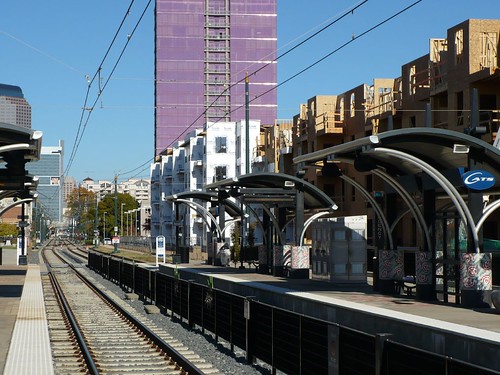Transit improvements are best deployed when they are governed and controlled 'under one roof.He goes on to say in his letter, relayed by the Cincinnati Business Courier
While FTA has been successful in supporting transit projects that are not controlled or operated by the region's principal transit agency, we have found that there are a great many economies of scale that better serve the taxpayer when a fully staffed and experienced transit provider is involved from the very beginningBut isn't that part of the problem? These massive regional transit agencies are typically stacked with suburban board members that don't always have the core cities needs at heart. They are usually concocting schemes to extract money or service in some form or fashion from the more transit willing neighborhoods in the region in order to have some sort of suburb to city dream bus or commuter rail line that costs a lot, but really doesn't move the needle on changing mobility in a meaningful way. Either that or they have to have an election that includes heavy transit opposition precincts that sink ballot initiatives that pass in the city proper.
So recently cities have been taking on the mantle of thinking up and building transit that works for them and their goals. Portland, Cincinnati, Austin, and others have all taken up planning for more urban transit options and with much different goals. At the start of the Portland Streetcar process, Tri-Met wanted nothing to do with it. They were a regional agency. Right or wrong, the city streetcar movement is a function of the neglect that center cities feel when it comes to regional transit priorities. The core might be the economic engine for the region, but the fiscal extraction continues.
This is also a disappointing admission that transit agencies and their federal funders still don't know their role in city building. I'm not talking about building a streetcar and waiting for housing development to come, but rather the need to economically serve, connect, and bolster regional employment centers with workers in a more productive way than the single occupancy car.
Today an NPR story on Austin popped up with TTI's Tim Lomax stating that it wasn't building roads or transit that needed to change, it was people's behavior.
But Lomax says his computer models show the only real solution is going to involve changes in behavior and lifestyle. "We did some modeling to suggest the kind of magnitude of change," he says. "We used a giant hammer on the travel model. We took away 40 percent of the work trips. We said those are going to happen somehow, but they're not going to happen in a car." To keep traffic flowing in his sophisticated models, Lomax plays God of Austin. "We said, instead of people driving on average 20 to 25 miles to get to work, now they're going to drive five, six or seven miles to get to work," he says. "That says there's going to be a massive shift in jobs and population."
Emphasis mine. Those other 40% of work trips that would be needed to keep traffic flowing green (which would never happen - induced demand, duh) would come from walking, biking, and transit because the employment cores were adequately served with good transit.
What we continue to see today is an overly regional approach to transit development based on a suburban fantasy of living where you want and commuting into work downtown. Most people don't work downtown. But intensification of core neighborhoods strengthens the tax base. So what you get is like what is happening in Minneapolis. The transit agency is trying to fund commuter service that they call light rail while the city thinks of streetcars because they don't have the funding power to do more. But there is no talk of dedicated lane surface light rail or subways that only go to the edge of the streetcar suburbs because that doesn't fit each side's worldview.
The FTA seems to be on the suburban side of the issue, allowing, even wanting, these commuter systems that end up being really expensive to operate (See Northstar in the Twin Cities) with somewhat limited value at this point in their transit network development. If the FTA can't figure out the suburban leaning of transit agencies or the need to feed employment centers better, we're going to keep traveling down the same choked road, and it won't be pretty.


